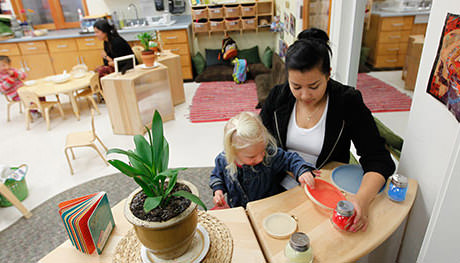The early childhood experience involves planning for a variety of environments. The physical environment may be the first one that comes to mind. But the social, intellectual, and emotional environments are equally important and critical to children's overall well being. Remember that the environment — in all of its aspects — is our partner in providing high quality early childhood programs.

In order for children to develop and maintain good health, several things need to occur. Children need nutritious foods to eat, a safe place to rest and be with loved ones, and physical exercise, movement, and play.
In most programs, children will spend part of their day inside and part of their day outside. Here are three different programs and their policies for being indoors and outdoors.
Which of these programs would provide the healthiest environment for young children? Rank the programs and write down why you think one program would be better than another for supporting health.
I was hired to teach in a center in a Head Start program in Los Angeles. I was shocked to discover that the children are not allowed outside to play. Turns out that the neighborhood is dangerous and often our staff finds used needles on the ground outside the building. One time we even found a gun! So in order to stay safe, the children are indoors throughout the day. In order to support children's physical and emotional health, we use our hallways as running paths and bike paths. We change out equipment and small play structures, as our space is small. We are trying to fundraise in the community so that one day our program can hopefully build a small gymnasium.
Use this template to record your observations, thoughts, and feelings. Download the Template
Deepen your understanding on the Topic: Outdoor health found in Performance Area 2 in the CA ECE Competencies. Scroll to page 80.
Can you find other places in this competency area that address these questions?

Visit the National Resource Center for Health and Safety for Child Care and Early Education. This website provides information about various issues revolving around health, safety and nutrition, including Caring for Our Children: National Health and Safety Performance Standards; Guidelines for Early Care and Education Programs, 3rd Edition (CFOC3).
Read "Giving Ourselves Permission to Take Risks" by Betty Jones to explore strategies for calculated risk taking for optimal development and discovery.
Visit the California Department of Education for resources on healthy eating and nutrition.